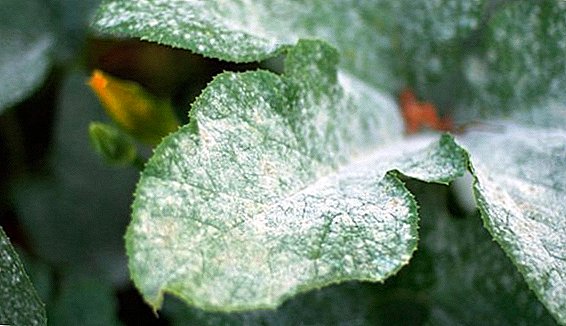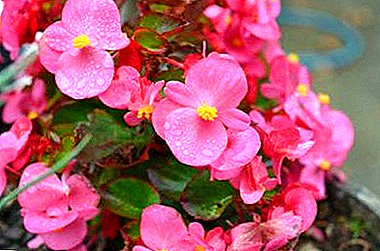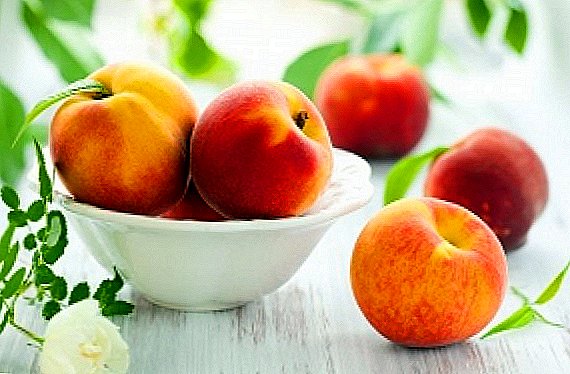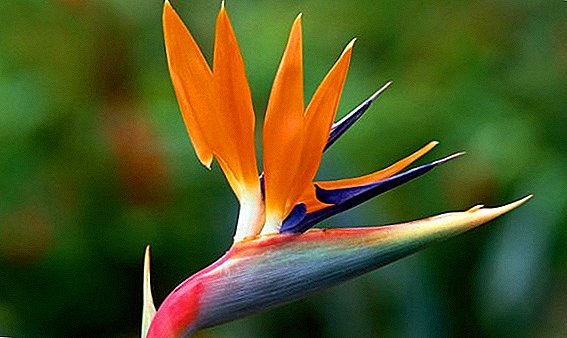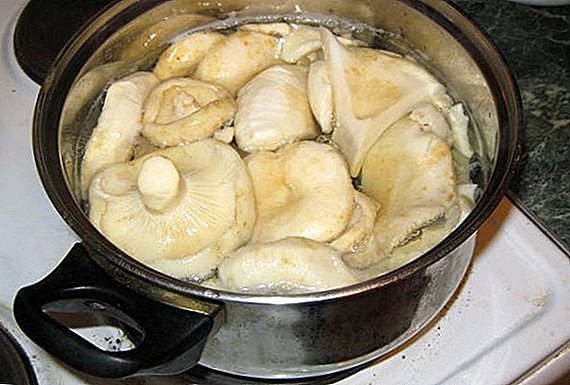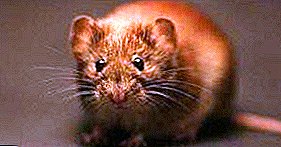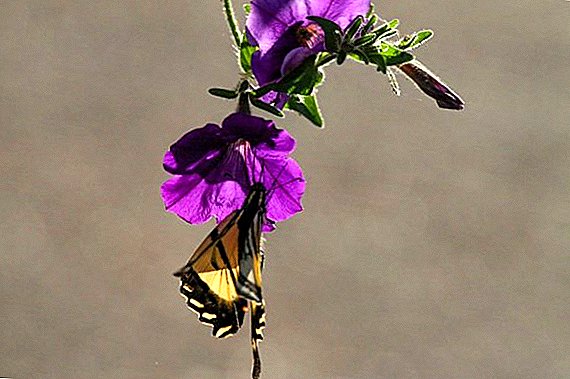 Every year more and more people prefer to start rabbits as pets. They are less demanding to care than dogs, more friendly than cats, and at the same time they have much more pleasant and suitable for interacting with humans sizes than hamsters or guinea pigs. There are 2 main groups of rabbits suitable for keeping as pets: these are large and dwarf breeds. This article focuses on the dwarf breeds of these animals, the rules for their maintenance and care.
Every year more and more people prefer to start rabbits as pets. They are less demanding to care than dogs, more friendly than cats, and at the same time they have much more pleasant and suitable for interacting with humans sizes than hamsters or guinea pigs. There are 2 main groups of rabbits suitable for keeping as pets: these are large and dwarf breeds. This article focuses on the dwarf breeds of these animals, the rules for their maintenance and care.
History of origin
It is difficult to say exactly when, and also as a result of the crossing of which breeds, the first representative of the group of dwarf domestic rabbits was first bred. According to the tacit agreement of breeders, it is considered that the first such animal was obtained as a result of the crossing of a white downy and silvery small rabbit breed.  At the end of the 19th century, in England, the first documented variety of domestic rabbit was obtained, corresponding to the parameters of modern dwarfs and called the Polish breed.
At the end of the 19th century, in England, the first documented variety of domestic rabbit was obtained, corresponding to the parameters of modern dwarfs and called the Polish breed.
Did you know? Females of rabbits have a specific and very unusual reproductive apparatus. Due to the presence of a forked uterus, they are able to wear 2 different litters conceived during 2 different intercourse.
At the beginning of the 20th century, work in this direction was actively carried out by German breeders, the result of which was the emergence of the Germelin breed, which is notable for its extremely unusual appearance. And in the 30s of the same century, the Dutch breeders actively worked on breeding dwarf rabbit with different color and length of wool.
Today there is a very large variety of breeds of these animals with a wide variety of colors, patterns and long hair. The average life expectancy of a modern domestic rabbit is 5-7 years, but under certain conditions they can live up to 10-12 years. 
Breed of dwarf rabbits
To date, there are about 70 different breeds of these animals, differing not only in appearance but also in nature, the degree of their attachment to the owners and the potential propensity to train.
In this article we will pay attention only to the most common and most suitable for home keeping representatives of the breeds of dwarf rabbits, since many of them exist only in nursery conditions due to poor exposure to domestication. Below you will find a list of such breeds with a small description of each of them.
You probably will be useful to consider the breed of decorative rabbits.
Lop-eared ram
The main feature of these animals are hanging, rather long ears. The sizes of rabbits of this breed, compared with other representatives of the dwarf group, are medium, their weight reaches 1.5 kg. There are several subspecies of this breed, slightly different in appearance and country of origin.  There is an American variety that has a rather large square-shaped head, short ears compared to other representatives of the breed, and very powerful hind legs.
There is an American variety that has a rather large square-shaped head, short ears compared to other representatives of the breed, and very powerful hind legs.
The Dutch subspecies of the breed, whose representatives have a more rounded head, large expressive eyes, very dense to the touch ears, and powerful hind and front limbs, enjoy good popularity.
Did you know? The maximum length of rabbit ears ever officially registered by man is about 80 cm.
But the classic representative of the lop-eared sheep is the German subspecies, which has a rather large head, almost always slightly tilted forward, and very large ears hanging on the sides in the manner of a ram's horns.
Video: rabbit ram
Rex
A distinctive feature of this breed are curved, rather small mustache sizes, which can be seen immediately after the birth of the little rabbits. Animals belonging to the Rex breed are rather large in comparison with other dwarf rabbits.
Their weight can sometimes reach up to 3 kg. They have very short, rather fragile-looking paws. Ears are upright, have slightly curved tips, the length of which is 10-13 cm.
Another distinctive feature of the breed is short, pleasant to the touch fur, very evenly distributed throughout the body, with the exception of small curls in the neck and lower abdomen. 
Japanese
Japanese rabbits have the greatest external similarity with soft toys from all the other breeds described in this article. They have a very thin, extremely pleasant to the touch fur, which in softness and subtlety is reminiscent of silk, and its color is most often either black or completely yellow.
On the body, according to the standards of the breed, stripes or spots of ashen, red or white must be present. The weight of an adult individual hovers around 800-1500 g.
The Japanese breed was bred in France, and first presented at an animal exhibition in 1887. 
Color dwarf
This breed has a strong-looking physique, but their paws and neck, as a rule, look quite fragile. The tail is always tightly pressed to the body. The animals have a rather large head, even against the background of their bodies. Their ears are one of the smallest among all dwarf species (up to 5.5 cm).
The standard weight of an adult representative of colored dwarfs varies in the region from 1100 to 1250 g. They have a very thick, shimmering wool, which can have almost any of the existing colors. The most rare and expensive color is considered pure white. 
Foxes dwarf
These animals, as the name implies, have a distant external resemblance to the members of the Fox family. First of all, the similarity is due to the nature of their hair, which in length, color and density resembles fox fur. The weight of representatives of this breed varies from 800 to 1500
Read the description of the fox pygmy rabbit and the peculiarities of its maintenance at home.
The head is small and neat, as is the whole body. Ears - upright, have a less pronounced coat than the rest of the body. The front legs are rather short, the hind ones are longer, but they do not have much power. 
Lionheads
The main feature of this breed of dwarf rabbits is the presence of a specific hair thickening around the neck and lower part of the head, which resembles a lion's mane. The weight of a standard representative varies in the region of 700-1400 g. The body is very short, compact, the legs are of medium length, rather strong.
The head of a lion-headed rabbit is medium in size, with straight, well-pubescent, rather short ears set rather high on it. The color of the fur cover varies from snow white and gray to black and brown.
Video: lionhead rabbits
Short haired
The body of this rabbit in its form looks like a small dense ball. The head is of large size, slightly skewed in the occipital side. Ears are planted quite far on the head, have small sizes (up to 5 cm). Paws of short-haired dwarf rabbits are very short, looking weak and thin.
The tail is also short and always tightly pressed to the body. The coat is uniform, rather thick, slightly shimmers in the sun, the variability of colors is extremely high. Ideal weight according to the standards of the breed - 1.1-1.25 kg. 
Dwarf dutch
This rabbit is an exact copy of its larger cousin (which is simply called Dutch), only significantly reduced in size. The weight of representatives of this breed varies from 1 to 2 kg. The wool of the classic Dutch rabbit is white-black in color, rather short and pleasant to the touch.
Did you know? Rabbits run much slower than hares. The speed of the rabbit reaches only 56 km / h, while the hare reaches 75 km / h.
The body is well-knit, well-developed hind legs stand out. Small sized ears are set vertically. Feature of the exterior of these animals are plump cheeks prominent on the face. 
Angora
A distinctive feature of the Angora rabbits is a very thick, long (up to 6 cm) and pleasant to the touch fur coat, which evenly covers all parts of the body of any representative of the breed. The body and paws are almost invisible under a thick and long layer of wool, but they have medium strength parameters in their severity.
The head is very short, but at the same time it is wide, the ears are set rather deep, upright, up to 7-10 cm in size. Angorans are characterized by the eyes of only two colors - red or blue. 
Dwarf butterfly
These animals were called butterflies for their distinctive pattern on their face, consisting of wool that is different from the main one in color. As a rule, dwarf butterflies have a white-black color. It is also possible tricolor - black, white and yellow shade of hair. Rabbits of this breed have a fairly strong physique and powerful hind legs.
Their head is large, but the neck is rather poorly developed. Ears - upright, medium length, oval in shape, up to 9 cm long. The weight of an adult representative of this breed ranges from 1500 to 1800. 
Dutch
It is the smallest of all existing modern dwarf breeds of rabbits. The weight of their representatives does not exceed 1 kg, but more often ranges from 500-700 g. The body is rather short, compact, the front legs are very short and straight. The head is small, but rather wide, has a round shape.
Ears - upright, slightly rounded at the ends, their length reaches 7 cm. Wool is short, soft, fits snugly to the body, the standards of the breed allow absolutely any of its color. 
How to choose a dwarf rabbit
When choosing a dwarf rabbit, it is necessary to focus primarily on the state of its health and potential problems that may arise in its future. If you plan to purchase a rabbit primarily as a pet - then choose the first rabbit you like and have a healthy appearance.
Important! It is not recommended to buy dwarf rabbits, especially very small ones, in spontaneous markets or from private sellers, as they may sell you a sick or inappropriate animal to the breed. It is better to make a purchase in large nurseries.
If you intend to use it for reproduction and / or participate with it in various exhibitions and competitions, then it would not be superfluous to ask the seller to provide you with a passport, vaccination card and information on the animal's pedigree.  When choosing your future pet, watch a little bit the behavior of the entire litter as a whole.
When choosing your future pet, watch a little bit the behavior of the entire litter as a whole.
Pay attention to how the baby on which you chose behaves with its brothers and sisters, how it manifests itself during feeding, whether it moves fast enough in a cage, how actively it explores the world around it and how it reacts to the approach of unfamiliar people .
Important! These animals, despite their natural fearfulness, eventually adapt to the constant presence of people next to them, begin to respond to their nickname, go to their hands, and sometimes even begin to demand attention to themselves with loud sounds and defiant behavior.
This will help you protect yourself from acquiring an overly aggressive or, on the contrary, passive pet. 
Features of the content of dwarf rabbits
In general, the home maintenance of dwarf rabbits is no different from the content of representatives of large breeds. In order not to describe all aspects of the process of keeping these animals at home, we limit ourselves to a list of the most important, in our opinion, features of this process. Here is the list:
- The cage in which the animal will live cannot be placed near windows and doorways, since the influence of excessive sunlight and drafts is detrimental to them.
- Nurseries, trays, drinking bowls and feeders in a cage should be fixed, because rabbits love to be active and will turn them very often.
- The bottom of the cage must be covered with straw or hay, which must be changed at least 3 times a week.
- A tray with a litter of sawdust needs to be changed every day - dwarf rocks like to be very clean and most often disdain to go to the already used toilet several times.
- These animals need daily physical exertion, so try to more often let them out of the cage to investigate the environment. But at the same time make sure that on their way there were no objects that they could damage with their teeth.
- Comfortable temperature for the maintenance of dwarf rocks is + 15-20 ° С, and the most appropriate air humidity is 50-70%.
- Due to the fact that most of the rabbits are active mainly at night, it is necessary to organize in their cage a sort of additional house in which they could hide from excess sunlight.
- At night, these animals often lay and eat cecotrophs - feces, which has many useful components that are vital for the normal functioning of their organisms.
- While walking around the house, it is necessary to carefully monitor the rabbit so that it does not crawl into any gap, for example, between furniture and a wall, from which it will then be extremely difficult for him to get out.

What to feed
The list of products suitable for the daily ration of this species of animals is somewhat different from that characteristic of the other rabbits. This is primarily due to the peculiarities of the work of their digestive tracts, which have low food throughput and sometimes have a very imperfect structure.
Agree to successfully grow rabbits, you need to provide them with proper nutrition. Learn all the subtleties of feeding rabbits.
List of foods suitable for food for dwarf rabbits:
- the main product in the diet is hay;
- dried fruits (apples and pears);
- cereals such as "Hercules";
- buckwheat;
- flakes;
- white bread croutons;
- green grass;
- cabbage;
- carrot;
- sprigs of fruit trees;
- pasta (boiled and dry);
- feed;
- wheat;
- rape;
- millet;
- rye;
- oats.
 Any food, except for hay, which should be available to rabbits in unlimited quantities at any time, should be given to rabbits in strictly limited quantities. For example, cereals should be given to animals no more than 25-30 g per day.
Any food, except for hay, which should be available to rabbits in unlimited quantities at any time, should be given to rabbits in strictly limited quantities. For example, cereals should be given to animals no more than 25-30 g per day.
All new food for rabbits must be introduced into the diet gradually, with all the necessary precautions, so that they can be quickly and painlessly removed from the diet in case of such a need.
In addition to direct food, the diet of dwarf breeds must include a variety of specialized vitamin and mineral supplements that can be purchased at almost any veterinary store.
Important! Dwarf rabbits have a very pronounced appetite: almost all the time when they are awake, they absorb food. Therefore, in order to avoid overeating, it is necessary to remove excess feed from them, leaving only a manger with hay.
Also in the cage you can put a variety of stones from minerals, which are designed to align the mineral balance in the body of animals, as well as to grind their teeth. In winter, it is advisable to add various branches and needles of conifers to the food. 
What diseases are dangerous for rabbits
There are no diseases that affect only representatives of dwarf species. For the most part, all the diseases that can happen to them are formed as a result of insufficient attention to them by the owners.
Unfortunately, rabbits are subject to a variety of diseases. We advise you to familiarize yourself with the diseases of ornamental rabbits, and also read about infectious diseases of rabbits that are transmitted to humans.
A variety of diseases of the digestive tract, respiratory organs, eye mucosa, thermal injuries, injuries, as well as a variety of specific lesions, such as rickets, trachomatitis, myxomatosis, pasteurellosis and dermatophytosis, are distinguished from illnesses.  Let us examine in detail the symptoms and methods of treatment of specific diseases, since the analysis of each of the nonspecific diseases will take a lot of time.
Let us examine in detail the symptoms and methods of treatment of specific diseases, since the analysis of each of the nonspecific diseases will take a lot of time.
- Rickets. The cause is a lack of sunlight and inadequate nutrition, as a result of which vitamin D deficiency occurs. The animal begins to eat almost all of its feces, its limbs twist, and the chest and back are deformed. In severe form, seizures may occur. Treatment consists in the introduction of vitamin D into the body and the elimination of errors in the diet.
- Pododermatit. The cause is the violation of temperature and sanitary standards of the content of rabbits. Among the main signs is to highlight the loss of hair on the legs, the formation of wounds on them, from which ooze, mucus, blood and pus, as well as the general symptoms of intoxication. Лечение - ликвидация неудовлетворительных условий содержания и обработка инфицированных ран на лапках.

- Дерматофитоз. Симптоматика полностью соответствует симптоматике стригущего лишая. It is transmitted from one animal to another, it is also possible human infection. Treatment - treatment of the affected area and the small surrounding part of the healthy skin with a variety of antifungal drugs.
- Myxomatosis. Manifested by the formation of specific nodular formations in the head, neck and genitalia of animals.
Rabbitheads should consider the symptoms of myxomatosis in rabbits and methods of its treatment at home.
Disease is transmitted through the bites of blood-sucking insects. It has an extremely low degree of cure, almost 100% of all diseased rabbits die. There is no specific treatment for this disease.
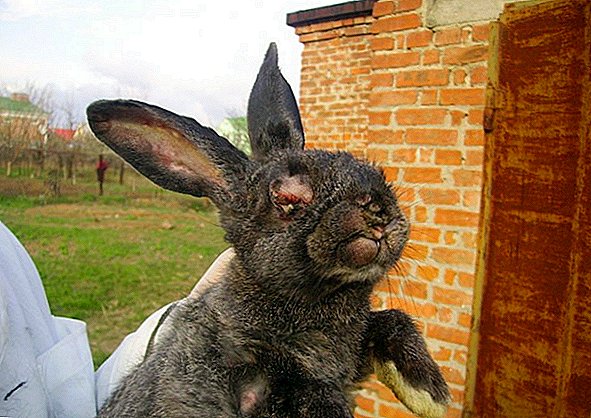
- Pasteurellosis. Pathology is manifested by inflammation of all mucous membranes, increased body temperature, if untreated, the internal organs are affected, and intestinal obstruction is formed.
Find out the causes and methods of treating pasteurellosis in rabbits.
Perhaps the appearance of purulent discharge from the nose and cough. Treatment is the management of antibacterial drugs.

So, we hope that you have received from this article all the information you are interested in about the dwarf breeds of rabbits. Carefully monitor the health of your pet, provide him with all the proper conditions of detention, surround him with attention and love - and he will surely live a long and happy life, giving you plenty of pleasant and joyful minutes.





